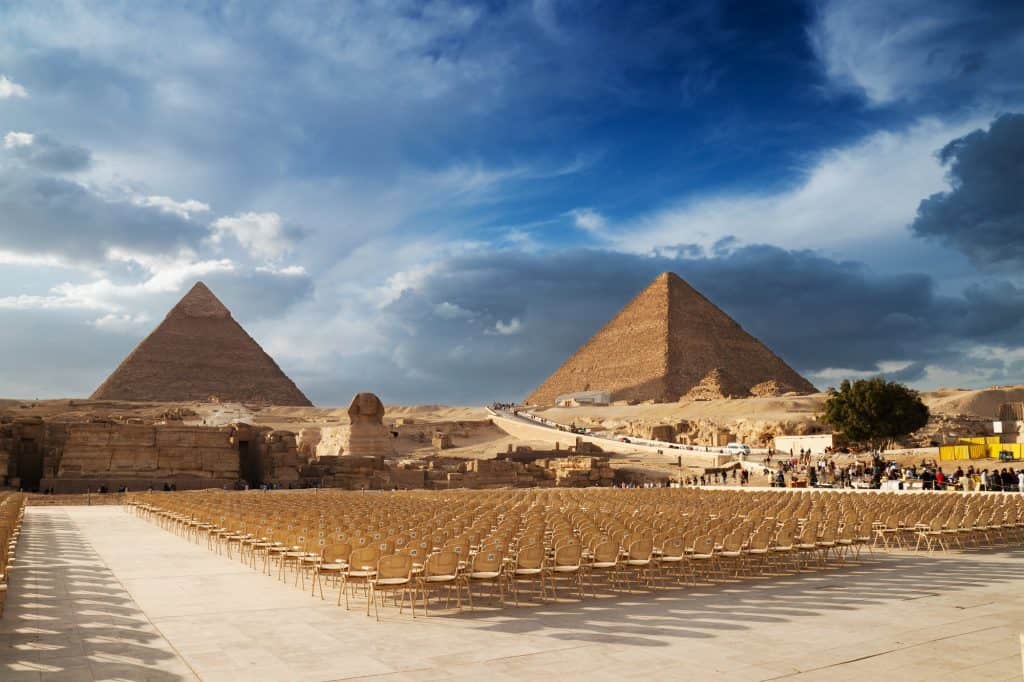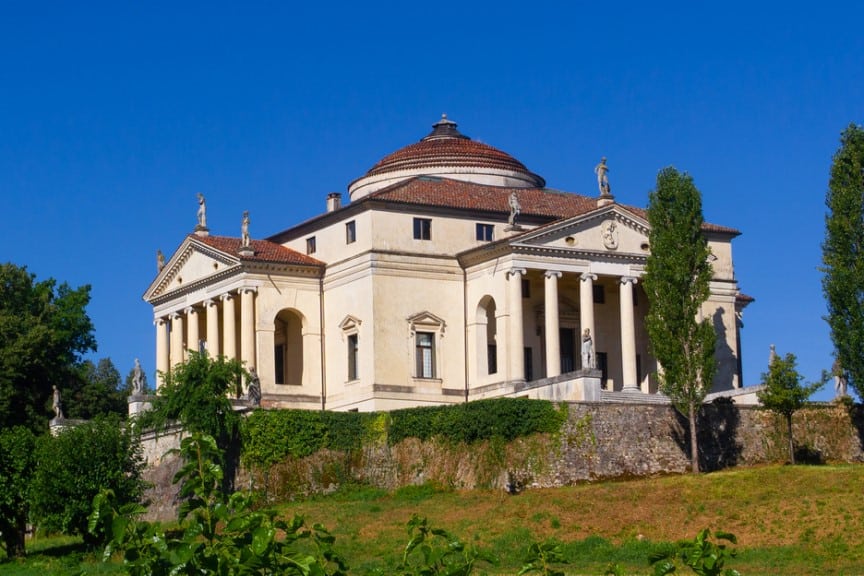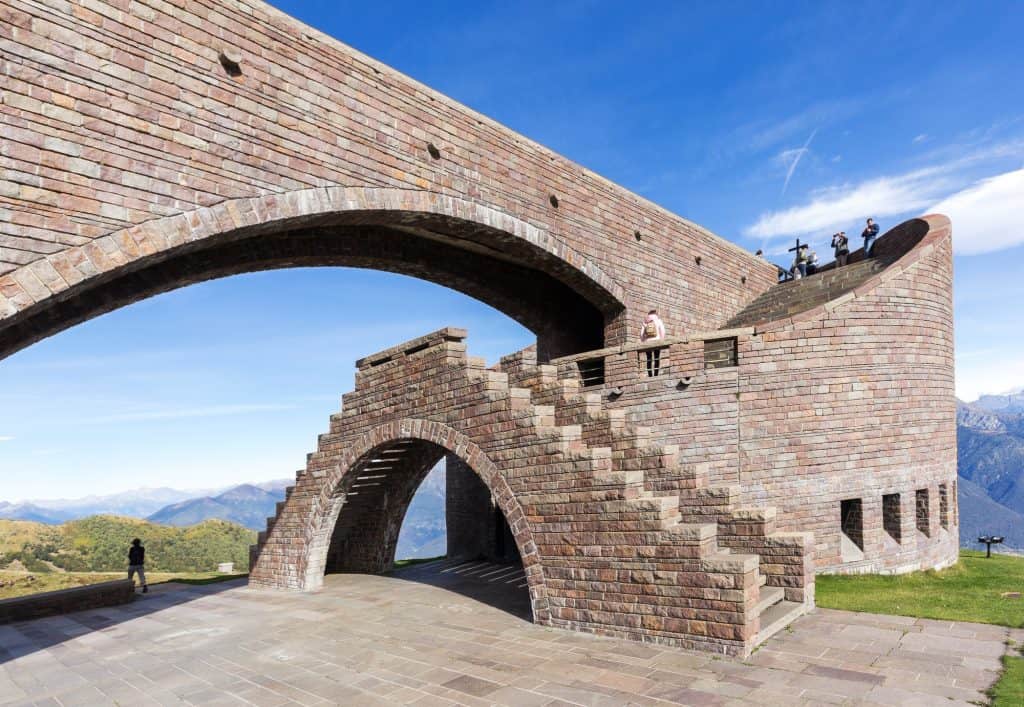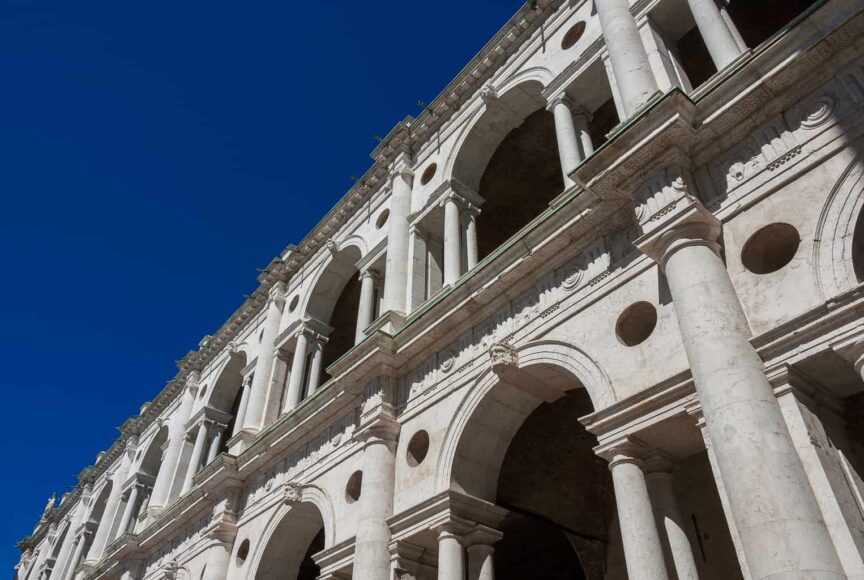Giovanni Valle is a licensed architect and LEED-accredited professional and is certified by the National Council of Architectural Registration Boards (NCARB). He is the author and managing editor of various digital publications, including BuilderSpace, Your Own Architect, and Interiors Place.
Form is a term used extensively in the field of architecture. It is the physical quality that shapes the structures we see around us. Form, in combination with texture, light, materials, color and shade is what gives a building or space its unique character.
The term “form” has many meanings. It can refer to the external appearance of an object or it can refer to a particular condition in which something manifests itself, such as water when converted to ice or steam. In architecture and design the term refers to the formal structure of a work – the way the parts and elements of a composition are arranged.
Form consists of 3-dimensional mass or volume and defines both external appearance or outline of a building as well as the internal structure. The principle aspect by which we distinguish form in terms of its appearance is shape. The shape of floors, walls, ceilings, doors and window openings collectively are what define a building’s form.
In addition to shape, there are six visual properties that define form:
Size
The width, length, and depth of a form – its dimensions – are what help determine its proportions. Its size also helps determine the scale of a particular form relative to other forms within its context.
Color
Color results from the reflection of light on a surface. As some colors are absorbed and some are reflected, those colors that are reflected are what we see. We perceive color based on hue, saturation, and tone. Color sets objects apart from their environment and affects their visual weight.
Texture
Texture refers to the tactile characteristics of a surface determined by the size, shape, and arrangement of the parts.
Position
Position refers to the location of a form relative to its surrounding environment or the visual field within which it is viewed.
Orientation
Orientation has more to do with the direction of a form relative to other forms, a reference plain, or to a person viewing the form.
Visual inertia
Visual inertia has to do with a firm’s geometry and orientation relative to the ground plane, gravity, or line of sight.
All of these properties are influenced by how we view them. How far away we are from the form, for example, determines its relative size. Lighting conditions can affect the clarity of a form’s shape or structure. The surrounding field also influences our ability to read or identify it. And our angle of view or perspective shapes what we see.
Primary Shapes
The human mind has a tendency to reduce the objects we see into simpler forms in order to better understand them. The simpler and more regular a form is, the easier it is for us to perceive them. The most important of these simple forms are primary shapes, which include:
- Circle
- Triangle
- Square
Circle
The circle is centralized and helps create stability. It is self-centering within its environment and, when placed within the center of a field, its centrality is reinforced. On the other hand, when associated with straight or angular forms along its circumference, a sense of apparent rotary motion can be created.
Triangle
The triangle is a stable form when resting on one of its sides. However, once it is rotated to stand on its tip or on any of its vertices, its state of equilibrium becomes more dynamic and less stable. In this state, it has the physical tendency to fall to one side. If anchored to a surface, it gives the illusion of falling over even if secured.
Square
The square represents purity and rationality. It is inherently neutral with no preferred direction. As such it is static as long as it is resting on one of its sides. However, like the triangle, when rotated it becomes more dynamic when resting on one of its corners.
Primary Solids

Primary shapes can be rotated or extended to create volumetric forms that are 3-dimensional. These solids are distinct and easily recognizable due to their consistency in form. When rotated about an axis circles generate spheres and when extended they generate cylinders. In similar fashion, triangles generate cones and pyramids and squares generate cubes.
Sphere
A sphere is a solid generated by the revolution of a circle around an axis or by a semicircle about its diameter. All points along the surface of the sphere are equal distance from the center point. Similar to a circle, its primary shape, a sphere is self-centering and usually stable unless it is on a sloped surface.
Cylinder
A cylinder is the extrusion of a circle along a central axis, but can also be viewed as a rectangle revolving around one of its sides. A cylinder has two circular faces on each end. When resting on one of its circular ends it is stable, but becomes unstable when tilted from a perpendicular axis to an angled axis.
Cone
A cone is created by the revolution of a right triangle about its side. It has a single circular face that tapers down to a single point at the opposite end. When resting on its circular face it is entirely stable. When tipped to the side it becomes more dynamic, particularly when on a sloped surface. When it is placed on its tip it becomes unstable and insecure.
Pyramid
A pyramid is made up of a polygonal base on one side and a point (vertex) on the opposite end. It consists of triangular sides that originate at the base and meet at the apex to create a vertex. Since a pyramid has only flat sides, it is stable regardless of which face it is resting on. However, when standing on the vertex or any of its other corners, it creates a sense of instability and uncertainty.
Cube
A cube is created by the extrusion of a square along a vertical axis. Composed of six equal square sides and right angles, a cube is static in form and stable when resting on one of its sides. Because it has equal dimensions throughout it lacks dynamic movement and direction. When resting on one of its sides it is entirely stable, however, when tipped on one of its corners it becomes unstable and creates the illusion of being imbalanced.
Regular vs Irregular Forms
The forms we have been discussing so far are regular in nature. That is, they have defined and consistent geometric properties. They are generally symmetrical and stable about one or more axes. Forms can also be irregular, however. Irregular forms have parts that are dissimilar and relate to one another in an inconsistent manner. They are generally asymmetrical and more dynamic than regular forms.
Irregular forms can be composed of regular forms that have had irregular elements subtracted from them. They can also be composed of regular forms that are arranged in an irregular manner. Since architecture deals with both solid mass and spatial voids, regular forms can be contained within irregular forms or, similarly, irregular forms can be enclosed by regular forms.
Transformation of Form

All other forms can be interpreted as the transformation of primary solids into other shapes by the manipulation of its dimensions or either the addition or subtraction of elements. These three forms of transformation – dimensional, subtractive, and additive – change the overall composition of a form, however the form may still retain many of the qualities of its original family, or it may be transformed into a new family depending on the extent of the transformation.
Dimensional Transformation
By altering one or more of its dimensions, a form can be transformed into a different shape. An example might be a cube which when flattened on two sides becomes a plane, or if flattened on all four sides and stretched out becomes a column or beam. While the dimensions change, its identity as a member of a specific family of forms (square, cube, etc.) remains. Some primary solids that can be transformed dimensionally include:
Sphere – can be elongated along an axis to create a variety of ovoidal shapes which differ in size and shape.
Triangle – can be transformed by altering the dimension of the base, modifying the height of the apex, or tilting the axis so it is no longer perpendicular.
Cube – can be shortened or elongated along its base, height, or depth to create similar forms of varying shape and proportions.
Subtractive Transformation
By subtracting a portion of a form’s volume, a solid can be transformed into another family or remain part of its original family depending on the extent of the subtractive process. If a cube, for example, has one of its corners subtracted from its shape, it still retains the quality of a cube. However, if it has all of its corners subtracted, it becomes a polyhedron, which would give it the appearance of a sphere.
In architecture, subtractive transformation of building forms may include the creation of recessed volumes used in entrances, window openings, internal courtyards. These recesses provide shading from the sun or protection from the elements through their horizontal and vertical surfaces.
Additive Transformation
A form can also be transformed through the addition of elements. The number of added parts and their placement determines whether the original form retains the characteristics of its original family or whether its identity changes altogether. The more complex and the greater in number the additions are, the more they create a composition that is made up of numerous forms of varying shape and size.
Whereas subtractive form is derived from the removal of parts from a volume, additive form results from attaching forms that may be smaller or larger than the volumetric form that they are attached to. The way in which these forms can be grouped include:
Spatial Tension – this type of relationship is technically not through attachment, but rather by proximity between one form and another so that they appear to be one unit.
Edge-to-edge Contact – in this type of relationship, forms share an edge in common as their point of linear attachment.
Face-to-face Contact – here the two forms, or possibly multiple forms, share corresponding planar surfaces that are parallel to each other.
Interlocking Volumes – this type of transformation involves the overlap or penetration of volumes so that they interlock with one another.
Additive form can be assembled in a way that creates specific patterns that are easily recognized as an ordering principle in architectural layouts. These relationships of parts and their relative positioning to one another include:
Centralized form – a number of secondary forms arranged about a central parent form. The central form is typically the dominant element in the composition. Since visual dominance is important in this type of arrangement, forms such as spheres, cones, or cylinders work well due to their self-centering geometric properties. Centralized forms are often isolated and free-standing to provide a greater sense of dominance.
Linear form – a series of forms arranged in a row so that they align sequentially with one another. Linear form can be created either from the arrangement of forms along a line or simply through proportional changes in a form’s dimensions. The forms within the line can be either repetitive or they can be dissimilar. They can be segmented or curvilinear and arranged horizontally or vertically. Linear forms can also be manipulated to enclose a portion of a space.
Radial form – a composition of linear forms that extend outwards from a centralized core element in a radial manner. It is the combination of centralized form and linear form into a single composition. The centralized form or core can be either symbolic or it can be a functional center of the arrangement. It can be articulated or it can simply blend in with the rest of the composition.
Clustered form – a grouping together of many forms that collectively and through proximity create a common visual field. Unlike other types of organization that have an organized structure, clustered forms lack a geometric basis for the grouping of their forms. Rather, they are organized by other principles such as proximity, equivalent size, shape, or function and not by hierarchical principles. Clustered form is common in vernacular architecture throughout many cultures.
Grid form – a regularized layout of forms that are controlled by a three-dimensional grid. The most common type of grid is based on the geometry of a square. This layout results in regularly spaced points and regularly spaced fields. A grid system layout lacks hierarchy and direction due to its bilateral symmetry and dimensional equality. A grid can be used to break down the scale of a surface into measurable parts and provide an even texture.
Articulation of Form

Articulation refers to the way in which the surfaces of a form are composed in order to define its shape and volume. A form that is articulated has a clear organization of its parts and their relationship to one another and to the whole. An articulated form is easily perceived and clearly legible. A form can be articulated in the following ways:
- By change in color, texture, pattern, or material in order to differentiate adjoining planes.
- Through the development of corners as distinct linear elements within abutting planes.
- By removing corners in order to physically separate adjoining planes.
- Using light to create tonal value contrasts along corners and edges.
Edges and Corners
The manner in which edge conditions are articulated is of great importance in defining a form. One way in which corners can be articulated is by the contrast in surface qualities of the adjoining planes.This effect is further enhanced by the quality of light and the laws of perspective. In order for a corner to be active there has to be a deviation between the surface edges of the neighboring planes.
Corners are defined by the joining of two planes. They may touch and form a seamless corner or they may remain separate creating the suggestion of a corner through the volume of space that replaces the corner. If the planes are shifted so that one reaches the corner but the other is set back, it creates the illusion of one plane bypassing the other. This treatment diminishes the corner condition and weakens the definition of the volume within.
Corners can also be adorned with a separate and distinct element in order to create greater emphasis. Whereas separated planes create a spatial void condition, this treatment creates a positive element within the corner. This helps to articulate the corner as a linear condition and define the edges of the adjoining planes.
Finally, corners can also be rounded off, creating a seamless transition between adjoining planes. Depending on the radius of the corner, this can provide the illusion of a continuous surface or it can simply smoothen the corner edge condition. The radius of curvature also impacts the interior volume as much as the exterior. If very small it will be practically imperceivable, but if very large it will affect both the interior and exterior spaces.
Surface Articulation
The surface properties of a plane affect its visual weight and our perception of its size and scale. Its shape is defined by a contrast in the surface color of a plane and the surrounding field, while its visual weight is defined by the variation of tonal value. The reference point from which the plan is viewed also affects its perceived shape. When viewed from the front its true shape is revealed, but when viewed at an angle it becomes distorted.
When elements of known size are placed in the visual context of a plane, this can provide cues on the size and shape of the plane. The combination of texture and color can also impact the perception of visual weight and scale of a plane as well as how much it absorbs or reflects light or sound. If the patterns or shapes used to articulate the plane are large in size, they can distort both its shape and exaggerate its proportions.
Reference
The principles outlined in this article are derived from the illustrative works by Francis D.K. Ching. If you would like to read more on the topic and see the graphic illustrations that have made the book a classic among students of Architecture through the years, check out Architecture: Form, Space, and Order.
Share this Post

